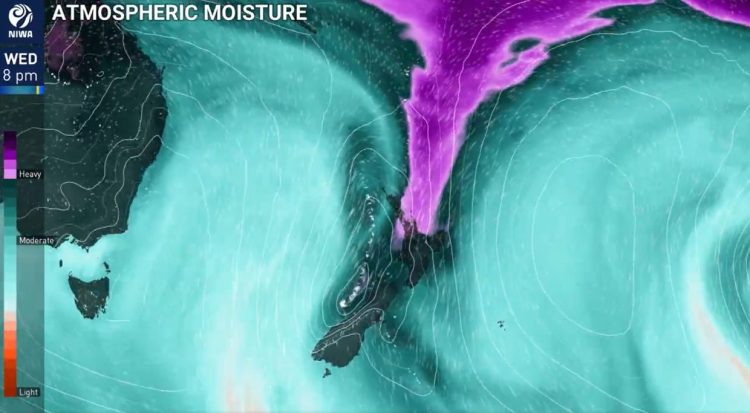Mưa lớn và gió mạnh dự kiến sẽ diễn ra ở phần lớn đất nước trong tuần đầu tiên của kỳ nghỉ học.
Thứ ba hầu hết sẽ ổn, nhưng nhiều mây sẽ xuất hiện với một số mưa bắt đầu ở phía tây nam vào chiều thứ Ba. Nhà khí tượng học Lewis Ferris cho biết thời tiết xấu nhất có thể sẽ xảy ra vào thứ Tư và thứ Năm. Mưa lớn dự kiến sẽ xảy ra ở phía trên đảo Nam vào tối thứ Tư, sau đó di chuyển đến thượng đảo Bắc.
Có những chiếc đồng hồ mưa lớn ở các khu vực phía tây và phía bắc của Đảo Nam, có thể biến thành cảnh báo màu cam. Một số khu vực của Đảo Bắc, đặc biệt là Vịnh Plenty, cũng có thể phải đối mặt với mưa lớn. Mưa đến từ một hệ thống áp suất thấp ở biển Tasman, mang lại không khí ấm và ẩm ướt. Điều này có nghĩa là nhiệt độ ấm hơn nhưng cũng có khả năng mưa lớn cao hơn, cùng với gió đông bắc mạnh.
Vịnh Plenty có một tháng 9 khô hạn, đặc biệt là Whakatāne, nơi chỉ có khoảng 30% lượng mưa thông thường vào tháng 9. Mưa dự kiến từ tối thứ Tư đến thứ Năm có thể mang lại nhiều mưa hơn so với khu vực đã thấy trong tháng này.
Ngược lại, không khí lạnh hơn sẽ ảnh hưởng đến nửa phía nam của Đảo Nam, có nguy cơ tuyết rơi xuống khoảng 500 mét ở nội địa Otago và phía nam Canterbury. Những khu vực này cũng có thể gặp mưa lớn.
Nhà khí tượng học Niwa Seth Carrier cho biết thời tiết tích cực hơn sẽ bắt đầu vào thứ Tư, với sự gia tăng độ ẩm dẫn đến mưa lớn ở đỉnh Đảo Nam vào thứ Tư và phía bắc vào tối thứ Tư đến sáng thứ Năm.
Vào thứ Ba, thời tiết sẽ chủ yếu khô trên hầu hết Đảo Bắc và phần lớn Đảo Nam, ngoại trừ bờ biển phía tây thấp hơn, đặc biệt là Fiordland, nơi mưa sẽ bắt đầu vào buổi chiều.
Gió nhẹ được dự kiến ở nhiều khu vực, với gió giật mạnh ở các khu vực thấp hơn của Đảo Bắc như Wellington và ở các địa hình cao hơn của Đảo Nam. Nhiệt độ nói chung sẽ thoải mái, với mức cao 17° C ở Auckland và Wellington, 18° C ở Hamilton và khoảng 15-20° C ở các vùng của Đảo Nam, bao gồm Christchurch và Dunedin.






























































